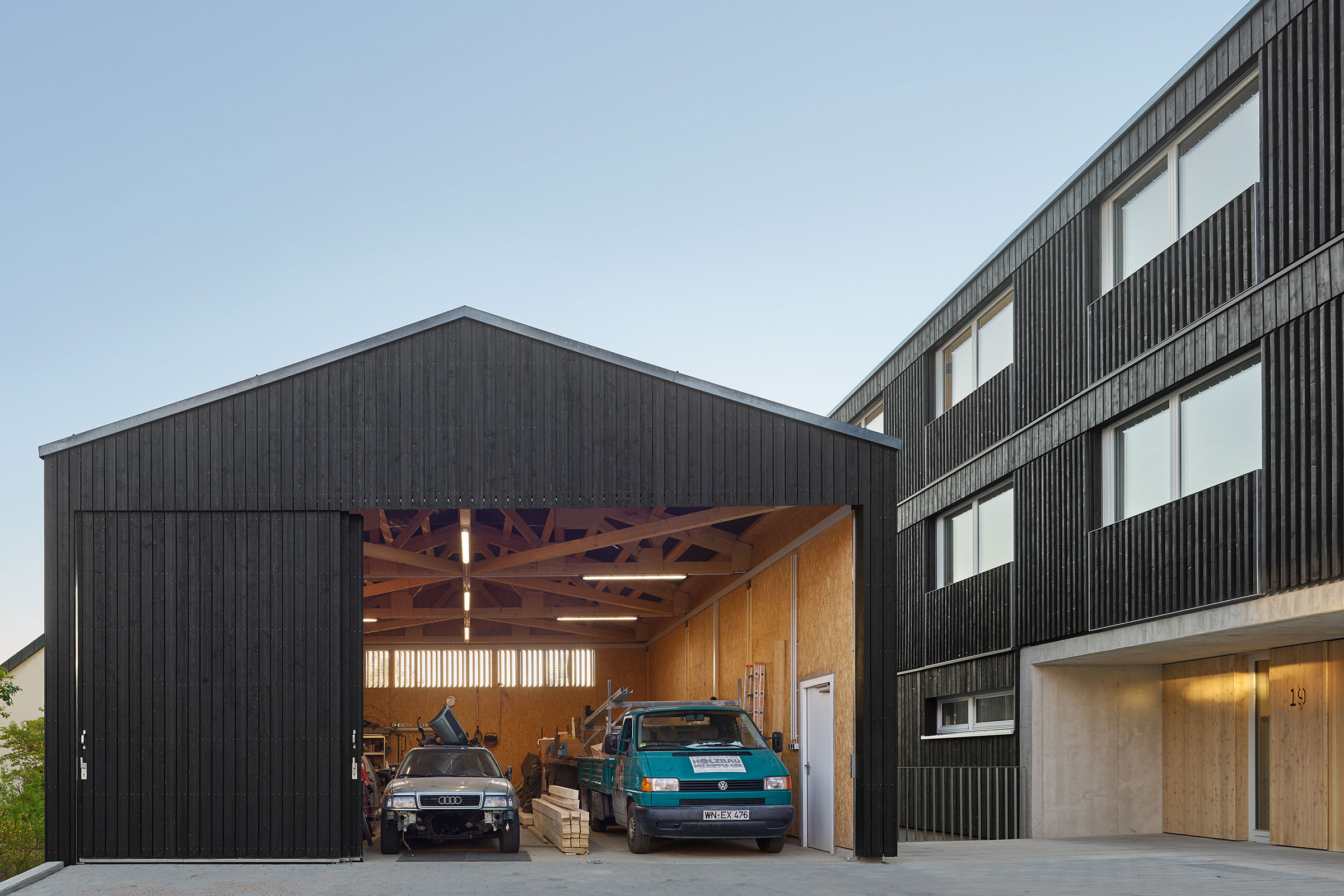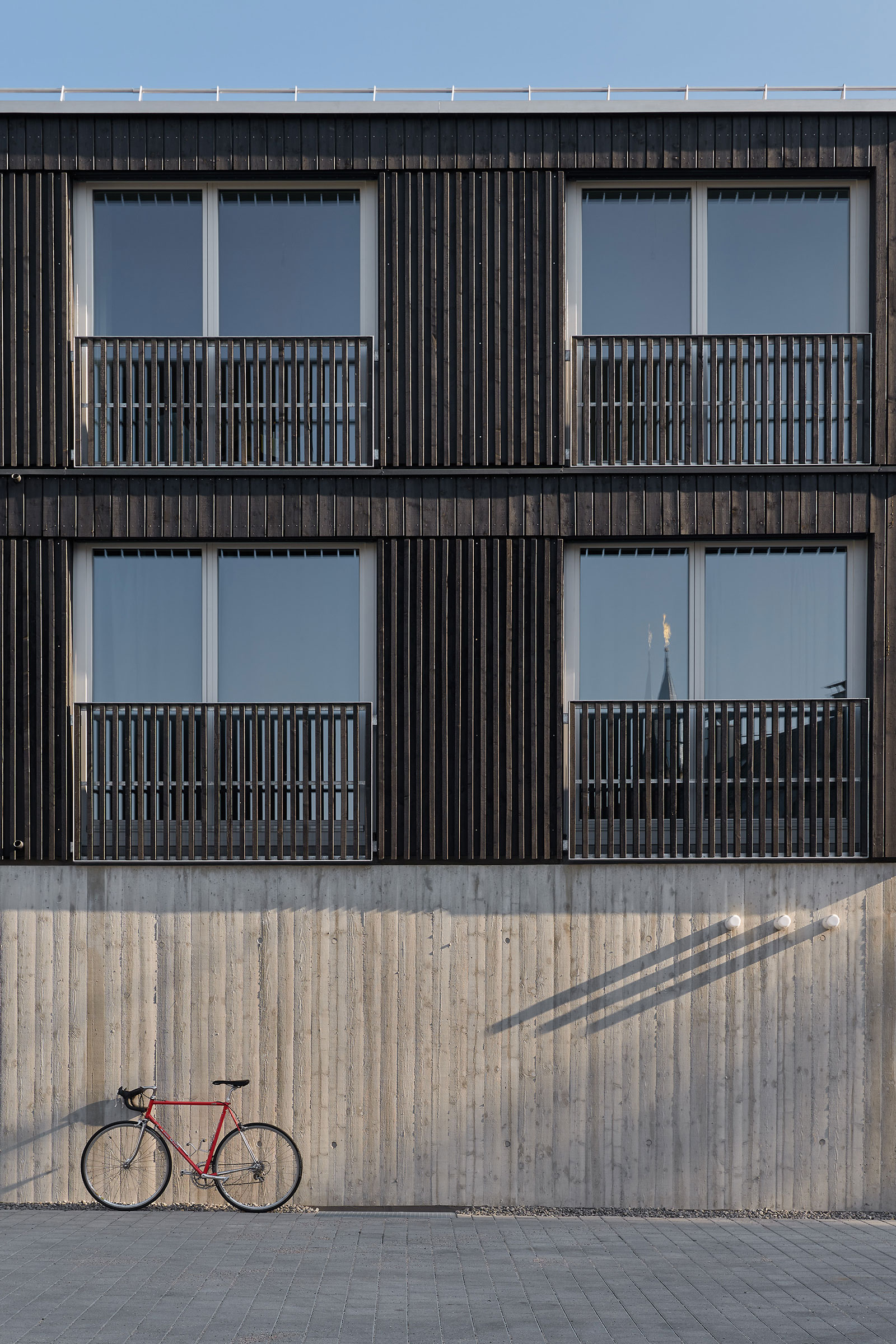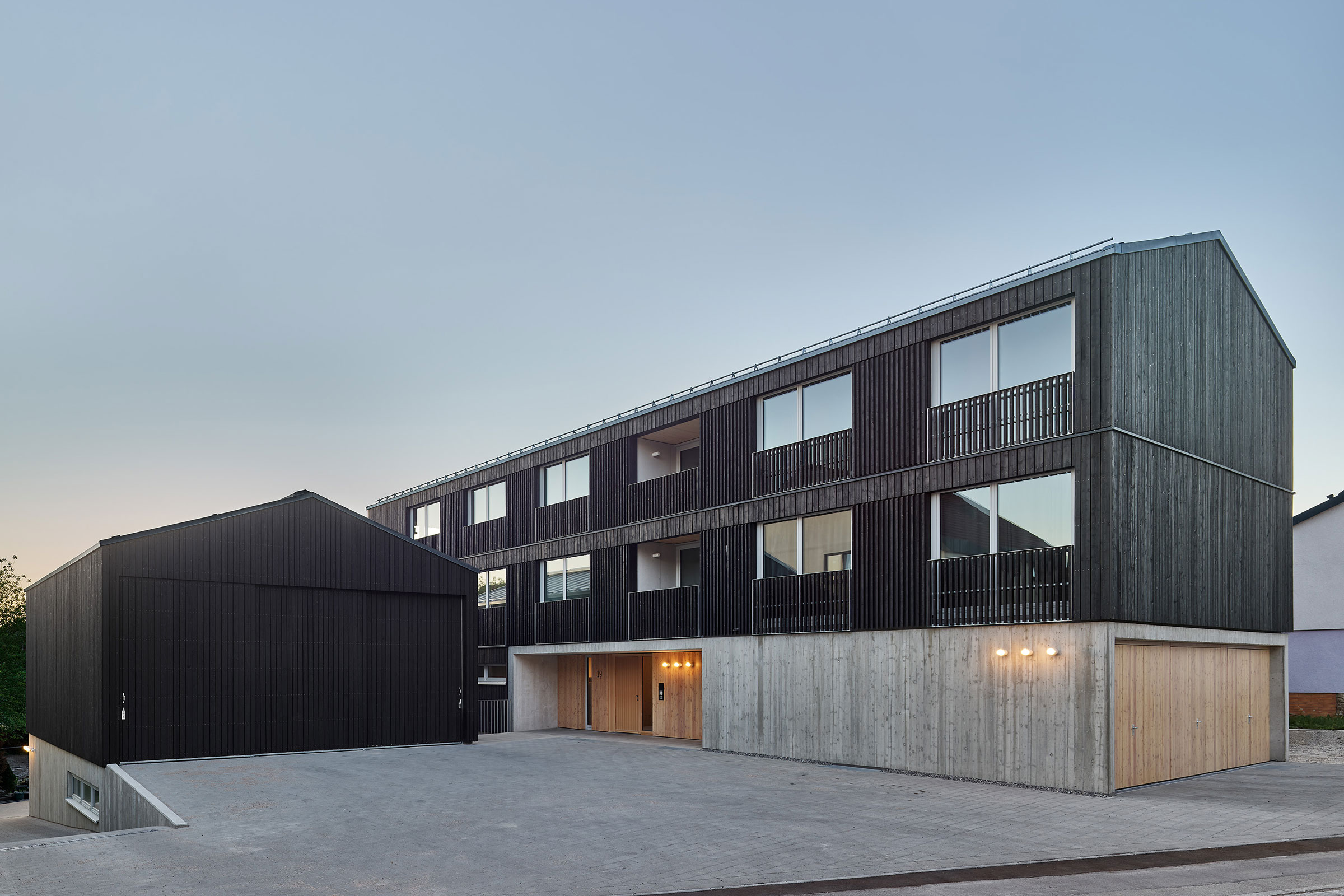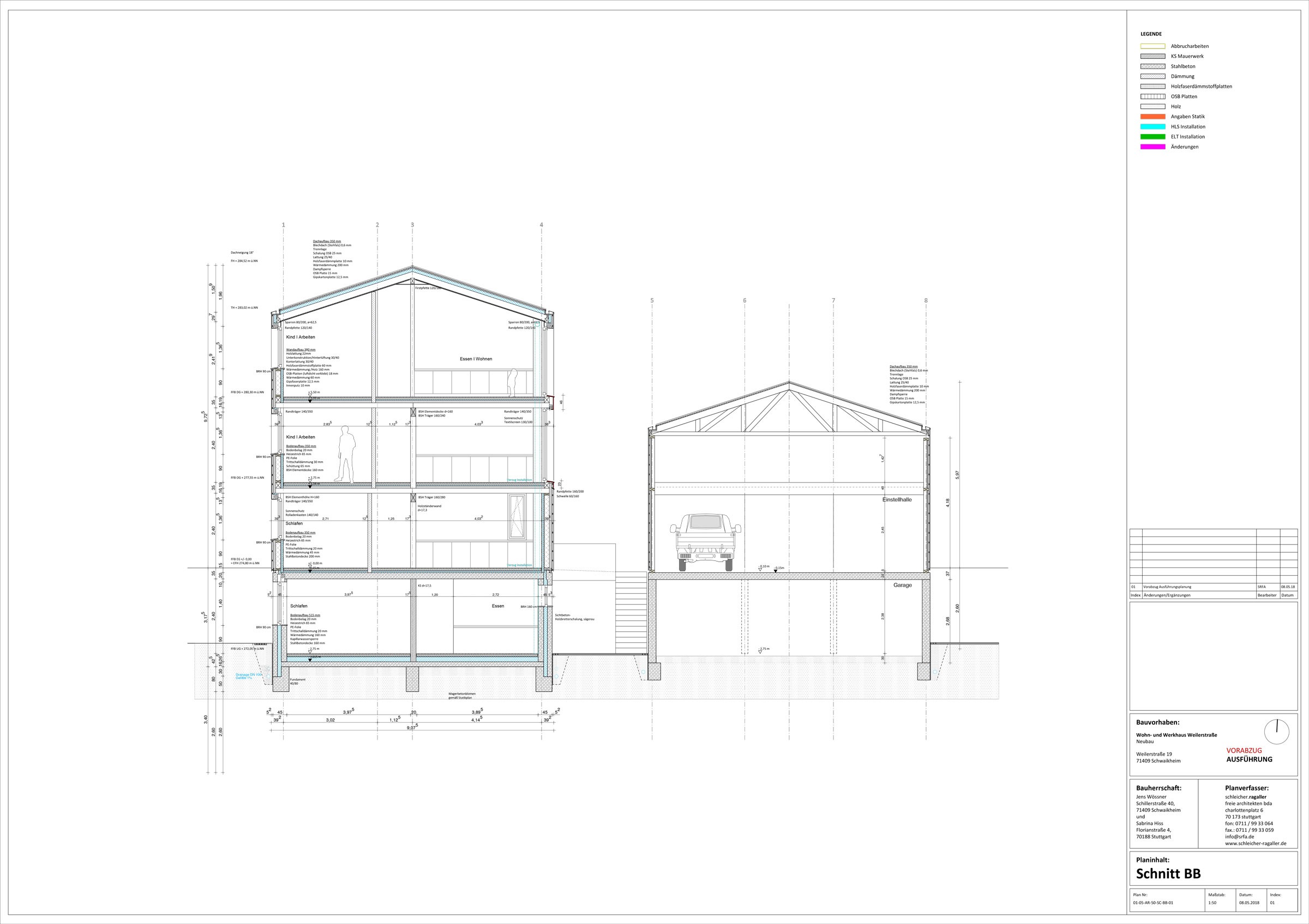Story at a glance:
- Schleicher.ragaller architects and CAPE Ingenieure built six apartments and a workshop as a centerpiece of this rural German town.
- The Housing and Workshop utilizes timber for aesthetic and sustainable purposes with the goal of lasting generations and aging beautifully.
- The project is net zero with a high-performing building envelope, photovoltaics, and reusable construction materials.
With precise woodwork and attention to local history, CAPE, Prof. Markus Binder and schleicher.ragaller architects’ housing and workshop is a structure fit for life and work. In Schwaikheim, a rural agricultural town near Stuttgart, Germany, the project utilizes a gabled farmhouse style and careful woodwork to indulge both craftsmanship and comfort.
The project’s client, a trained carpenter, commissioned the six apartments and workshop to continue his craft and to provide a quality space for togetherness and creativity in his hometown. Considering its location in the center of Schwaikheim, the team wanted it to offer a strong local presence and bring people together through beautiful, lasting design. Working with these goals of appeal, craftsmanship, and longevity through sustainability, local timber became both the starting point and the focal point of the design.
With the engineering help of CAPE Ingenieure, schleicher.ragaller architects brought the client’s wishes to life. The building becomes a characteristic space, embodying the carpenter’s style and local identity with progressive applications of traditional building and design techniques. Plus, with conscientious windows, heating, and electricity, the building is also net zero energy.

Photo by Zooey Braun Photography
A connecting massive base grounds the timber of the building’s exterior and unites the three-story apartment building and the workshop. The base mediates the height difference of the building and the slope of the ground toward the garden.
Designed with the same visual rhythm as the vertical standing timber construction on top, the base and the facade’s formwork “act as a business card for the client and also an interpretation of the surrounding agricultural buildings of the context, without devolving into the realm of folksy pastiche,” says architect Michael Ragaller.

Photo by Zooey Braun Photography
The structure is made of almost entirely reusable materials. Taking inspiration from its neighboring agricultural buildings, the apartments and workshop intend to age gracefully and develop a long-term patina.
The dark-painted timber and rough concrete of the exterior call back to the site and its previous agricultural occupant. The wood, concrete, and glass together amplify the setting’s past and local identity with the echoing gables and the foreground of the workshop yard, while also bringing new and individualistic character to the space.

“The implementation of the chosen materials—and this is nothing new but unfortunately not always self-evident—demands a precise craftsmanship from every trade involved in the building process,” Ragaller says. Especially given the ways in which the concrete of the base cooperates with the wood formwork of the facade, each material detail required full attention and precision of application to be lasting physically and in visual appeal.
“It is astounding, even in such a technologically advanced building industry, how much effort goes into simple but precise craftsmanship,” Ragaller says.
While the materials were chosen with longevity in mind, the structure incorporates them with technologies that realize the building’s goal of sustainability. The apartments and workshop are net zero energy. The apartments all open up to the south for maximum indirect light and are built with a very high-performing building envelope. An efficient heat pump provides warmth while also complying with the minimum usage according to the KfW energy efficiency standards. Photovoltaic panels on the roof top off the energy requirements to bring the building down to net zero.
Among the fields and meadows of Schwaikheim, the apartments and workshop find their home in how they contribute character and quality space to the community. “The most sustainable aspect of the project at the end of the day is simply that the client feels pride in the building. The future familial custodianship of the site is therefore fulfilled. This “Social Sustainability” is for us the most important,” Ragaller says.


